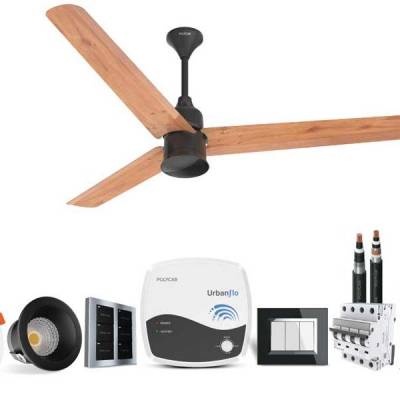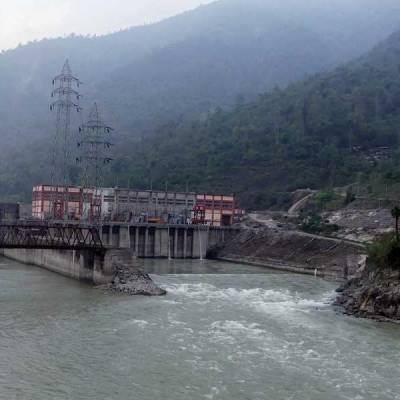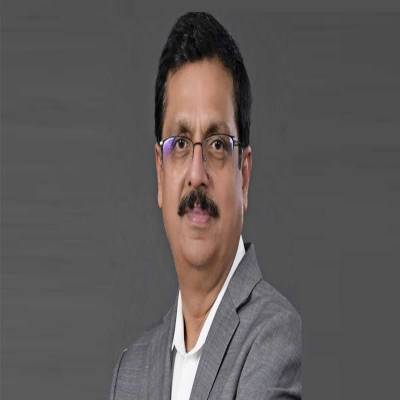- Home
- Infrastructure Energy
- POWER & RENEWABLE ENERGY
- Urban Oases

Urban Oases
Our cities are heaving. Antiquated infrastructure is groaning under the weight of rapid urbanisation. An irreversible phenomenon, the only solution is to build for the future, upgrade existing metropolises and construct new megalopolises, cities that can cope with the challenges of urban living, urban oases that can be magnets for investment û smart cities.
Concept and characteristics
A smart city is one that amalgamates technology and basic urban infrastructure to improve the standard of living. Technology integration, seamless transportation and connectivity, energy efficiency, sustainable building practices, and walkability are just some of the defining characteristics of a smart city.
However, the concept of a smart city is a fluid one and entails several different approaches. Existing cities, for instance, can be retrofitted with smart elements or redeveloped in phases. Entirely new cities, greenfield projects, conceived as ´smart´ from the offset and constructed from scratch can also be built. There really is no fixed template. But the lowest common denominator to any kind of smart city is a smart building. On a basic, microscopic level, if a city is to be smart, it needs to have smart buildings.
Driven by a growing demand for enhanced yet efficient living and working spaces, buildings today are getting ever smarter. It is a trend that´s gathering momentum and eventually ´smart´ will be the only way to build.
What makes a building ´smart´?
Similar to a smart city, a smart building uses technology to integrate the various processes that govern its functioning, ensuring it runs as efficiently and sustainably as possible by reducing costs and resource consumption.
Over the past decade, buildings in India have evolved from being concrete hulks to spaces designed to not just be aesthetically pleasing but using modern construction methods, technology and materials.
Landmark project
L&T Realty has been among the builders spearheading this change, constantly endeavouring to build structures that make for a brighter, greener future. Our projects incorporate sustainable design practices and are designed to conserve and make optimal use of natural resources. Take, for instance, the Seawoods Grand Central project in Navi Mumbai. This flagship project is India´s first transit-oriented-development.
Developed by L&T and designed and planned to international standards by HOK, Seawoods Grand Central incorporates sustainability in every aspect of its design. The project has been awarded Gold level pre-certification from LEED, which means it will have the least impact possible on the environment during construction and operations, translating into lower monthly overheads and increased savings.
Savings everywhere
The project features a fully glazedfaçade that lets in ample natural light, reducing the need for internal lighting. But at the same time, the use of heat-repelling high performance glass keeps the heat out, thereby reducing energy consumption and costs. In another step aimed at reducing the carbon footprint, the Seawoods Grand Central embraces renewable energy. Some of the energy demands in the common area are met by electricity generated from solar power, which is further complemented by the usage of an energy-saving building management system, which brings down energy consumption even more.
Water conservation is among the central design themes of the Seawoods Grand Central. Water, treated from the STP, is recycled and used for landscaping, thereby cutting down dependence on water resources. The building uses rainwater harvesting, which further reduces the demands placed on natural sources of water.
The future is smart
Keeping in mind the need for heightened security with a minimum of inconvenience, the Seawoods Grand Central uses intelligent parking control systems and under-vehicle scanners that reduce the need for a manual security check. This keeps the traffic moving, resulting in shorter wait times for patrons parking their cars. Commercial offices in the complex are also integrated with a smart-access control system.
Projects like L&T´s Seawoods Grand Central in Navi Mumbai are ushering in a new - and crucial - wave of real-estate projects. Urbanisation is inevitable and irreversible and the emergence of smart cities is vital to coping with this phenomenon. Projects like the Seawoods Grand Central are the building blocks, catalysing the development of such cities. They are harbingers of the future, laying the foundation for the smart cities dream.
"It is a trend that´s gathering momentum and eventually ´smart´ will be the only way to build."
Today´s green projects are laying the foundation for the smart cities dream, says SHRIKANT JOSHI, Chief Executive & Director, L&T Realty. Our cities are heaving. Antiquated infrastructure is groaning under the weight of rapid urbanisation. An irreversible phenomenon, the only solution is to build for the future, upgrade existing metropolises and construct new megalopolises, cities that can cope with the challenges of urban living, urban oases that can be magnets for investment û smart cities. Concept and characteristics A smart city is one that amalgamates technology and basic urban infrastructure to improve the standard of living. Technology integration, seamless transportation and connectivity, energy efficiency, sustainable building practices, and walkability are just some of the defining characteristics of a smart city. However, the concept of a smart city is a fluid one and entails several different approaches. Existing cities, for instance, can be retrofitted with smart elements or redeveloped in phases. Entirely new cities, greenfield projects, conceived as ´smart´ from the offset and constructed from scratch can also be built. There really is no fixed template. But the lowest common denominator to any kind of smart city is a smart building. On a basic, microscopic level, if a city is to be smart, it needs to have smart buildings. Driven by a growing demand for enhanced yet efficient living and working spaces, buildings today are getting ever smarter. It is a trend that´s gathering momentum and eventually ´smart´ will be the only way to build. What makes a building ´smart´? Similar to a smart city, a smart building uses technology to integrate the various processes that govern its functioning, ensuring it runs as efficiently and sustainably as possible by reducing costs and resource consumption. Over the past decade, buildings in India have evolved from being concrete hulks to spaces designed to not just be aesthetically pleasing but using modern construction methods, technology and materials. Landmark project L&T Realty has been among the builders spearheading this change, constantly endeavouring to build structures that make for a brighter, greener future. Our projects incorporate sustainable design practices and are designed to conserve and make optimal use of natural resources. Take, for instance, the Seawoods Grand Central project in Navi Mumbai. This flagship project is India´s first transit-oriented-development. Developed by L&T and designed and planned to international standards by HOK, Seawoods Grand Central incorporates sustainability in every aspect of its design. The project has been awarded Gold level pre-certification from LEED, which means it will have the least impact possible on the environment during construction and operations, translating into lower monthly overheads and increased savings. Savings everywhere The project features a fully glazedfaçade that lets in ample natural light, reducing the need for internal lighting. But at the same time, the use of heat-repelling high performance glass keeps the heat out, thereby reducing energy consumption and costs. In another step aimed at reducing the carbon footprint, the Seawoods Grand Central embraces renewable energy. Some of the energy demands in the common area are met by electricity generated from solar power, which is further complemented by the usage of an energy-saving building management system, which brings down energy consumption even more. Water conservation is among the central design themes of the Seawoods Grand Central. Water, treated from the STP, is recycled and used for landscaping, thereby cutting down dependence on water resources. The building uses rainwater harvesting, which further reduces the demands placed on natural sources of water. The future is smart Keeping in mind the need for heightened security with a minimum of inconvenience, the Seawoods Grand Central uses intelligent parking control systems and under-vehicle scanners that reduce the need for a manual security check. This keeps the traffic moving, resulting in shorter wait times for patrons parking their cars. Commercial offices in the complex are also integrated with a smart-access control system. Projects like L&T´s Seawoods Grand Central in Navi Mumbai are ushering in a new - and crucial - wave of real-estate projects. Urbanisation is inevitable and irreversible and the emergence of smart cities is vital to coping with this phenomenon. Projects like the Seawoods Grand Central are the building blocks, catalysing the development of such cities. They are harbingers of the future, laying the foundation for the smart cities dream. "It is a trend that´s gathering momentum and eventually ´smart´ will be the only way to build."




















